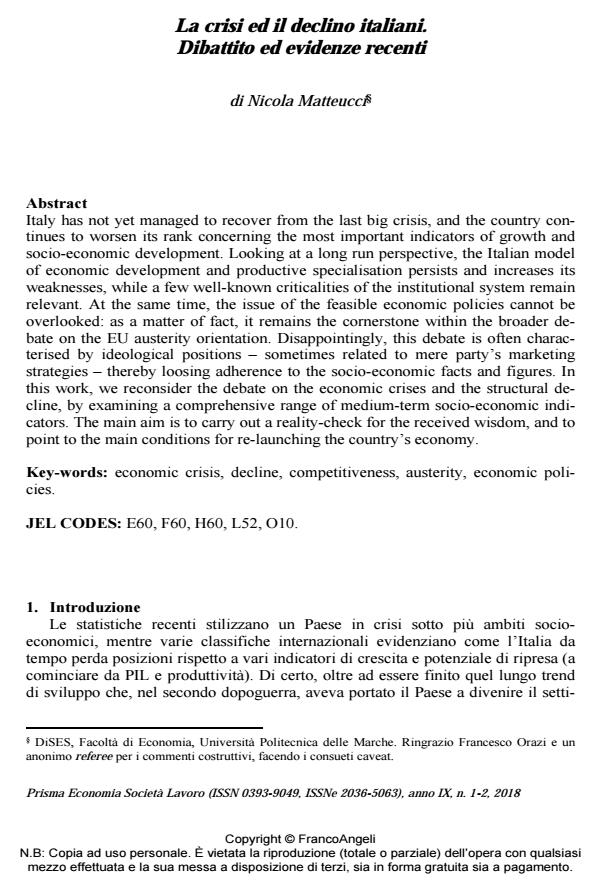La crisi ed il declino italiani. Dibattito ed evidenze recenti
Journal title PRISMA Economia - Società - Lavoro
Author/s Nicola Matteucci
Publishing Year 2019 Issue 2018/1-2
Language Italian Pages 20 P. 77-96 File size 274 KB
DOI 10.3280/PRI2018-001006
DOI is like a bar code for intellectual property: to have more infomation
click here
Below, you can see the article first page
If you want to buy this article in PDF format, you can do it, following the instructions to buy download credits

FrancoAngeli is member of Publishers International Linking Association, Inc (PILA), a not-for-profit association which run the CrossRef service enabling links to and from online scholarly content.
Italy has not yet managed to recover from the last big crisis, and the country con-tinues to worsen its rank concerning the most important indicators of growth and socio-economic development. Looking at a long run perspective, the Italian model of economic development and productive specialisation persists and increases its weaknesses, while a few well-known criticalities of the institutional system remain relevant. At the same time, the issue of the feasible economic policies cannot be overlooked: as a matter of fact, it remains the cornerstone within the broader de-bate on the EU austerity orientation. Disappointingly, this debate is often charac-terised by ideological positions - sometimes related to mere party’s marketing strategies - thereby loosing adherence to the socio-economic facts and figures. In this work, we reconsider the debate on the economic crises and the structural de-cline, by examining a comprehensive range of medium-term socio-economic indi-cators. The main aim is to carry out a reality-check for the received wisdom, and to point to the main conditions for re-launching the country’s economy
Keywords: Economic crisis, decline, competitiveness, austerity, economic policies.
Jel codes: E60, F60, H60, L52, O10
Nicola Matteucci, La crisi ed il declino italiani. Dibattito ed evidenze recenti in "PRISMA Economia - Società - Lavoro" 1-2/2018, pp 77-96, DOI: 10.3280/PRI2018-001006